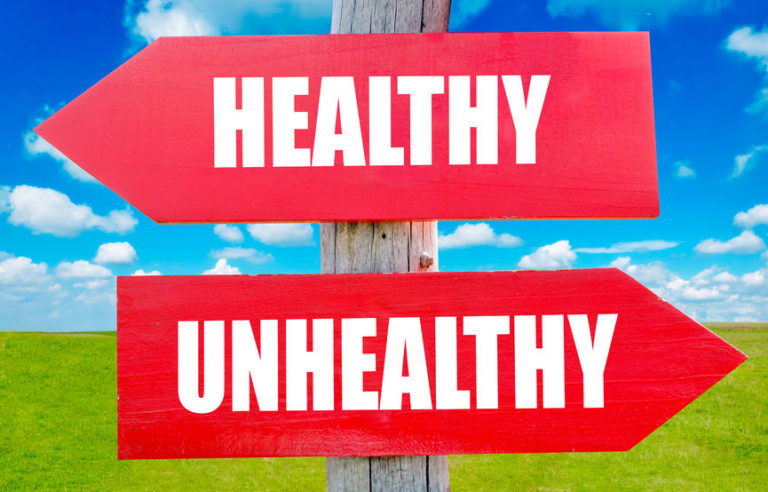Teen Suicide Warning Signs and Prevention Tips
If you, or someone you know, is experiencing thoughts of suicide, please call 1-800-273-8255 immediately for help. The National Suicide Prevention Lifeline is available 24 hours a day. You may also text 741741 to reach The Crisis Text Line.
According to the Center for Disease Control and Prevention (CDC), suicide affects all ages. It is the second leading cause of death for people ages 10-34.
With this daunting statistic, parents, family members, and friends may ask themselves: What are the warning signs/red flags, risk factors/vulnerability, and most importantly, what can caregivers do to help?
Warning Signs and Red Flags
The National Alliance on Mental Illness state the following red flags:
- Increased alcohol and drug use
- Aggressive behavior
- Withdrawal from friends, family and community
- Dramatic mood swings
- Impulsive or reckless behavior
Utmb Health offers some additional warning signs to be cognizant of:
- Feelings or statements of hopelessness
- Feeling trapped
- Increased alcohol or other drug use
- Anxiety, agitation, or sleep problems
- Feelings or statements that reflect not having a reason to live or a sense of purpose
- Threatening to hurt or kill themselves
- Looking for ways to kill themselves; seeking access to pills, weapons, or other means
- Talking or writing about death, dying, or suicide (if it is out of the ordinary)
Some teens voice very specific statements, such as “I am planning to end my life,” and some express in-direct statements, such as, “I wish I didn’t exist.” These direct and in-direct statements should always be taken seriously.
Risk Factors and Vulnerability
Some young adults have more risk factors than they do protective factors, according to the Child Mind Institute. The institute goes on to help identify some key risk factors that some teens may exhibit. Sometimes warning signs and risk factors can be the same:
- A recent or serious loss; might include the death of a family member, a friend or a pet. The separation or a divorce of parents, or a breakup with a boyfriend or a girlfriend, can also be felt as a profound loss, along with a parent losing a job, or the family losing their home.
- A psychiatric disorder, particularly a mood disorder like depression, or a trauma- and stress-related disorder.
- Prior suicide attempts increase risk for another suicide attempt.
- Alcohol and other substance use disorders, as well as getting into a lot of trouble, having disciplinary problems, engaging in a lot of high-risk behaviors.
- Struggling with sexual orientation in an environment that is not respectful or accepting of that orientation. The issue is not whether a child is gay or lesbian, but whether he or she is struggling to come out in an unsupportive environment.
- A family history of suicide is something that can be really significant and concerning, as is a history of domestic violence, child abuse or neglect.
- Lack of social support. A child who doesn’t feel support from significant adults in her life, as well as her friends, can become so isolated that suicide seems to present the only way out of her problems.
- Bullying. We know that being a victim of bullying is a risk factor, but there’s also some evidence that kids who are bullies may be at increased risk for suicidal behavior.
- Access to lethal means, like firearms and pills.
- Stigma associated with asking for help. One of the things we know is that the more hopeless and helpless people feel, the more likely they are to choose to hurt themselves or end their life. Similarly, if they feel a lot of guilt or shame, or if they feel worthless or have low self-esteem.
- Barriers to accessing services: Difficulties in getting much-needed services include lack of bilingual service providers, unreliable transportation, and the financial cost of services.
- Cultural and religious beliefs that suicide is a noble way to resolve a personal dilemma.
We’ve identified warning signs and risk factors, now what are some action items caregivers can do to help?
How to Help
Purposefully stated by Former U.S. Surgeon General, Regina Benjamin, as a preface to National Strategy for Suicide Prevention, Benjamin offers this statement:
“Reducing the number of suicides requires the engagement and commitment of people in many sectors in and outside of government, including public health, mental health, health care, the Armed Forces, business, entertainment, media, and education.”
The National Strategy also offers 13 goals and 60 objectives on how we as a family and community can offer help to those at risk to harm to themselves.
Difficult to do, but recommended by Raising Children, a parenting website out of Australia that provides documented resources for assisting families with medical and behavioral needs, it’s best to ask your child directly if they are thinking to commit suicide. By doing this, you are in a position to allow the young adult to talk about their suicidal thoughts.
Raising Children offers suggestions on questions you could ask:
- Have you thought about not being here anymore?
- Are you thinking about suicide or ending your life?
- Have you thought about how you would do it?
- Do you know when you would do it?
If the teen answers “yes” to any of these questions, it’s imperative to seek immediate help. Again, we refer you to our opening paragraph and direct you to the 1-800-273-8255. The National Suicide Prevention Lifeline is available 24 hours a day.
Don’t leave your child alone! Remove anything in the home that could cause harm, such as sharp objects, drugs, rope, razors, guns or medications. Do not let them have access to drive a car.
Also, Language is vital in how you address the troubled youth. Raising Children suggests that you stay away from saying things such as:
- But you have everything to live for!
- There are people worse off than you!
- We all feel a little down sometimes
- You’ll feel better after a good night’s sleep
- What can I do to make you feel better?
Stories of Hope and Recovery
Our words from professionals are important, but from a grass-roots personal perspective, we end and refer you to a story of hope from Rudy:
Why Talking About Suicide Should Be Normalized
I almost died by suicide. Its grasp was almost too strong, and I felt hopeless. I believed there weren’t’t people who cared whether I lived or died and yet, I am still here. How did I get here?
To tell that story I need to start at the beginning: I had an abusive and impoverished childhood, and for as long as I can remember I always suffered from depression and anxiety. I either felt like I was in an insurmountable rut or that I was being overwhelmed by too many stressors at once. Even as a kid, I contemplated what the world would look like without me.
Somehow, I survived the battlefield that is adolescence — albeit with many emotional scars. It was 2009; I was 21 years old, and the Great Recession coupled with a loss of career direction made it feel like the world was crumbling around me. At first, I escaped into the world of theater, but financial hardship soon made it impossible to keep playing make-believe forever. It wasn’t too long before I entered a new battlefield: the US Army. I had to make a drastic life change, and at the time joining the military seemed like the best way out of yet another seemingly insurmountable rut. It would end up being the most significant decision of my life — and nearly causing the end of it.
I shipped off to basic combat training, feeling ill-prepared for what lay ahead but committed to seeing it through to the end. I simply had to succeed because there was no plan B if I failed. I felt if I did, I might as well not be living anymore.
Surviving basic training was the most difficult thing I’ve ever experienced. Not so much the physical, but rather the mental toll it took on me and everyone around me. I was really affected by having to carry off one of my fellow soldiers who experienced a catatonic episode. I didn’t have a word for it at the time, but I knew that feeling from personal experience. I knew the kinds of thoughts that were taking place behind those glazed-over and barely blinking eyes, and they weren’t good.
Surprising even myself, I graduated basic training and made my way to the Arizona desert for the next stage in my army career. The constant stress from weekly tests that only got more difficult, poor leadership and feelings of loneliness kept building up day by day, until I couldn’t take it anymore. So, late one afternoon I walked into the dining facility and sat down next to one of the few people I felt like I could talk to and told them I wanted to die. And then I froze.
For a very long time.
I had what they called a catatonic episode. I could see, smell and hear the world around me (including the laughter), but I couldn’t physically respond back. By the time I broke out of it I was lying in the emergency room. Like the soldier I had once helped, I now had to be lifted out of my seat and forced onto a stretcher.
I tried to get past that humiliating experience like it never happened, but my mental health was only growing worse and just a couple days later I was admitted to a psychiatric ward for six days. By the time I came back to my unit, it was clear that the only option for me was to be medically discharged from the army with little to show for my time served. I felt like I had failed.
I had hoped I would be able to bounce back once I returned home. But day after day and week after week those hopes slowly began to fade away. I was discharged in October and by Christmas that year I had completely fallen apart. I lost track of the days, my hygiene was poor, I wasn’t getting out or socializing much and I felt like I had very little to live for.
The grasp of suicide wrapped itself around me, and I was out of energy trying to fight against it. I remember being around family on Christmas and feeling so worthless and unworthy of being there. At the end of the night, I called a friend who had moved away and told him I intended to die by suicide that night. This was going to be the end of my story.
But it wasn’t the end. I didn’t die that night. Once again, I survived. Now, I’d be lying if I said I had some miraculous intervention that led me to “see the light” and cured me of my depression. But I did commit that I would no longer live with these feelings in silence. However, the fact that I was willing to talk to my friend about my pain and there was someone actually willing to listen meant there was still some hope for improvement.
After that, I kept speaking up — not just with friends but within my community, as well as online. I started sharing my story and visiting local colleges, then hospitals and psychiatric centers, similar to ones where I was once a patient, to try to offer some hope and comfort during their darkest times, since I wish someone had done that for me. From there, my online presence continued to grow and pretty quickly I was sharing my story and advocating for better mental health care across various platforms. I started traveling the country and connecting with people from all over the world. I found my calling, and it was about speaking up — something I used to be so ashamed about.
Now, every Sunday I host a live online talk show called SPSM Chat – Suicide Prevention on Social Media. I interview some of the leading voices in the field of suicide prevention, as well as provide a platform for rising voices whose stories deserve to be told. When I took over the show from creator Dr. April Foreman, my goal was to build a space where people from all walks of life, including me, could be as open about suicide as they are about their favorite hobbies or TV shows. I want to be able to ask people about suicide and give them a place they can feel comfortable enough to respond honestly.
Suicide is still a topic that is not talked about nearly enough, and it is a detriment to us all because it leaves people living with suicidal feelings and ideation in silence. I’m alive today because there are people around me who I can reach out to when I am suffering. Because of that, suicidal thoughts no longer have a grasp on me.
Please know you are not alone. If you or someone you know is struggling emotionally or has concerns about their mental health, there are ways to get help. Please see a list of resources below.
Call the National Suicide Prevention Lifeline at 1-800-273-TALK (8255).
Call the National Alliance on Mental Illness HelpLine at 1-800-950-NAMI (6264)
Call the Substance Abuse and Mental Health Services Administration at 1-800-626-HELP (4357)
Text HOME to 741741 for free, 24/7 crisis support in the U.S.








